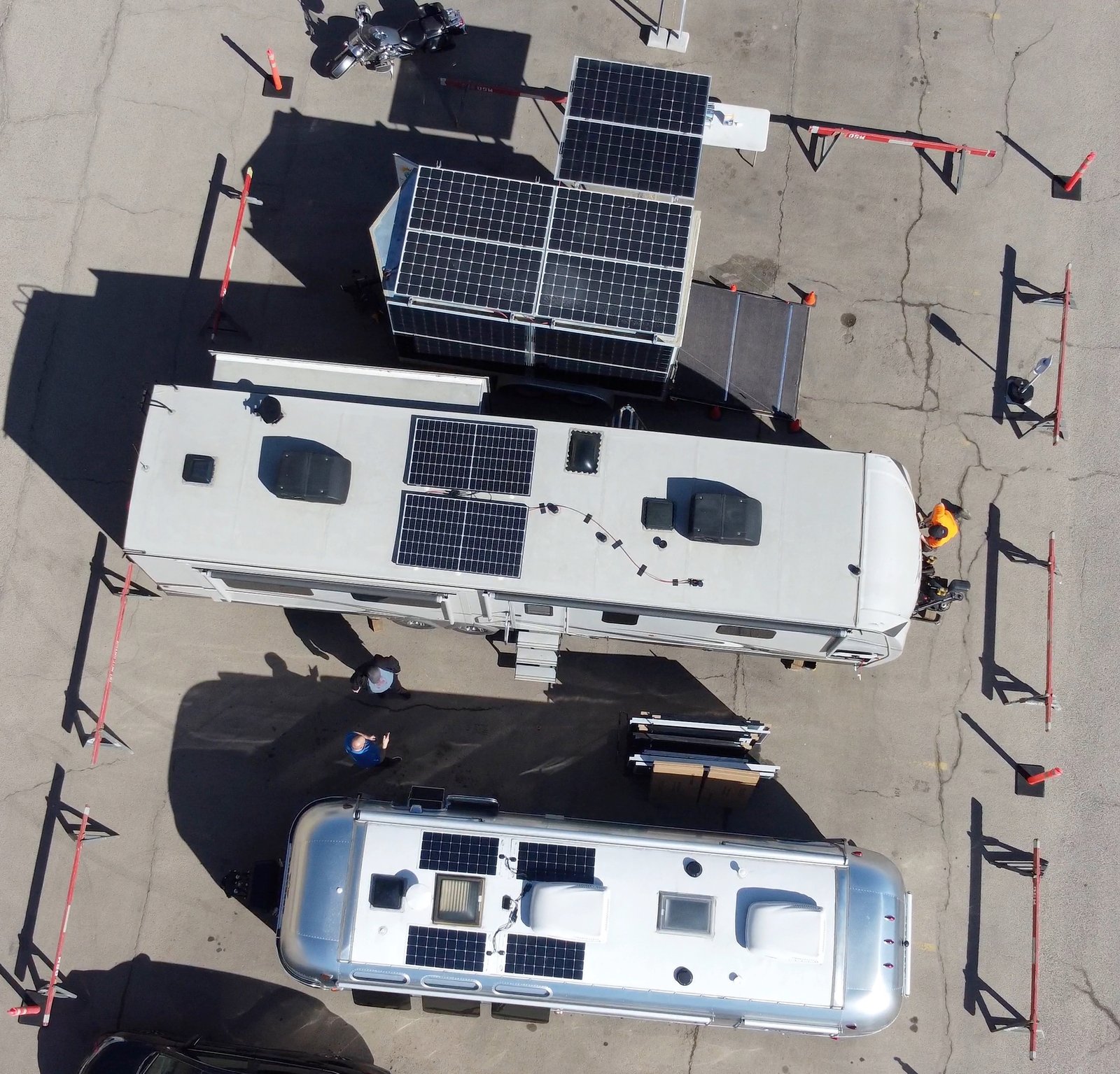By David Dodge
With COVID-19 there’s been a run on bicycles, cross country skis, recreational properties, recreational vehicles and camping equipment. You will know this if you have tried to reserve a camping spot in provincial or national parks.
When Remi Watts of CBI Solar contacted Green Energy Futures to pitch a story on putting solar on recreational vehicles I must confess I was picturing a solar module from Canadian Tire on the roof of an old RV.
But my how technology has changed. Snowbirds and campers alike love their recreational vehicles and going off grid means they are not beholden to scarce campgrounds with plugins, and noisy generators.
And we’re not talking simple, cheap solar modules. We’re talking about full-on off-grid solar systems with sophisticated charge controllers, lithium-ion batteries and enough power from the sun to go for days or weeks on end.
A few years ago Remi Watts and CBI solar were doing less than $100,000 business in this space per year. “This time around, we’re doing a hundred thousand dollars of business a month,” says Watts.
The Red Deer company has so much demand for these off-grid RV solar systems they set up a mobile workshop in a mall parking lot in Edmonton. That’s where we met up with Remi Watts.
“We’re here at West Edmonton mall. They graciously let us have a couple of stalls here in their parking lot on the south side. And we’re here to talk about RV, solar and off-grid systems,” says Watts.

Solar makes for carefree living on the open road
Remi is standing between a large motorhome and a brand new Airstream trailer.
“This unit here [the motor home] will have four, 335-watt modules, a 48-volt inverter in two 48 volts batteries.”
That’s a large 1.3 kilowatt solar system on a vehicle that was designed to use energy efficient appliances so it goes a long way.
People are spending anywhere between $2,000 and $20,000 on these sophisticated systems.
“My personal trailer is a very simplistic one. I have two modules and a single lithium battery and a charge controller. And mine’s a $2,000 unit,” says Watts.
The Airstream on the other hand has four flexible solar modules that follow the contours of the sleek top of the Airstream trailer, a very sophisticated charge control system, digital controls and four lithium-ion batteries.

When you think about these vehicles as retirement homes instead of weekend warrior camping vehicles you can start to understand why people are investing in top-notch systems.
“An Airstream like this is upwards of $200,000 and we see big coach motor homes that are half a million dollars and they’ll put $20,000, or maybe even $30,000 worth of equipment in that unit, which really is a drop in the bucket when you consider the cost of that unit and how much time that people now spend in them,” says Watts.
Watts company CBI Solar is also very accommodating. They sell Victron components for do-it-your-selfers and they also install full systems as well.
These systems will cover most of the loads in a trailer. “The only thing you don’t want to do with a system like this is try to heat with it,” says Watts.

Don Riep’s Off-grid Retirement Airstream
Meet Don Riep. He cashed in his business to retire early and “This is our retirement Airstream.”
I recall the Airstream craze of 30 years ago when my grandparents travelled around North America going to Airstream rallies, meeting people and touring the continent.
The shiny iconic trailer is back. “It’s a 2020 Airstream Globe Trotter 30-foot. And it’s kind of been on our bucket list for a long, long time,” says Riep.
Riep put four 100-watt flexible solar modules on the roof and is going to add four more for a total capacity of 800 watts. He replaced the stock electrical system with new charge controllers, and inverter to supply 120 volts to his entire trailer and added four lithium-ion batteries.
“Now we will be able to pull off the side of the road and stay overnight or stay a week if it’s a beautiful little Lake,” says Riep. Or they can find little out of the way campgrounds with no services. No services, no problem now.
Don has got his eyes on trips to British Columbia, the east coast and the warmer climates south of the border for the winter, once COVID-19 settles down.
Remi Watts came to the solar business from the oil and gas industry. “I had been in oil and gas for many years as a pipe fitter in, and an operator,” says Watts.
CBI Solar is a subsidiary of Watts Projects a firm that did oil and gas and forestry projects starting in 1996.
He started discussing solar many years ago with a colleague at Watts. “I went to SAIT and did electrical and my colleague Mark trained up in the design and engineering side. And here we are today,” says Watts.
CBI Solar has done small off-grid solar projects, larger municipal projects, farm projects and is now wading into utility scale solar.
“There is a huge amount of potential” in this business says Watts as his crew busily installs RV systems in the mall parking as curious people stop to see what’s going on. Just as we were leaving a guy walks up and asks Watts about installing a system.

